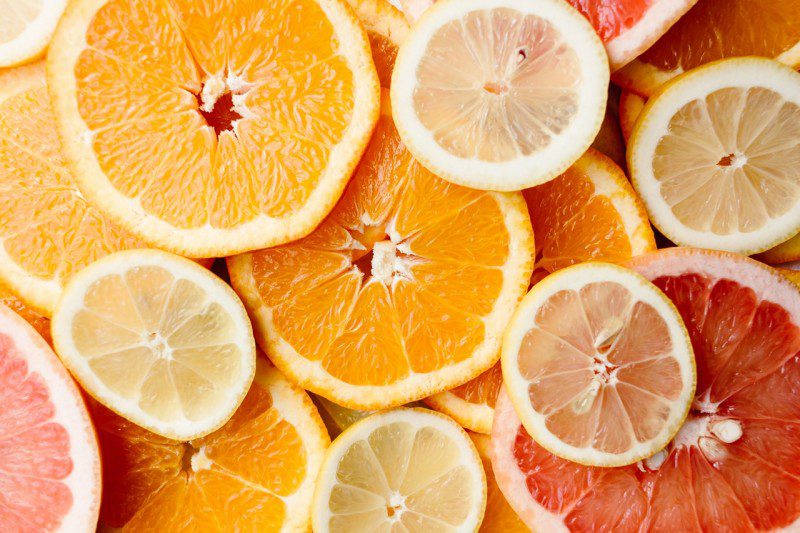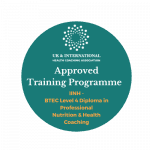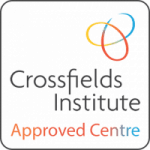Is your gut leaky? It may sound dramatic but it’s really not. It’s also not that uncommon. While it can start from an unknown intolerance (e.g. gluten), leaky gut can also occur from stress, exercise, travel and more. In fact, more and more people are struggling with leaky gut and either don’t even know it or don’t know how to fix it. And while you think it only affects digestion, the reality is that leaky gut can lead to many other health conditions. So how can you know that your gut is leaky? What should you eat to heal a leaky gut? What diet(s) should I follow? Is there a step by step plan of action? The answers to all of this and more in this blog post.
What is a leaky gut?
Leaky gut is another name for intestinal permeability. This means that leaky gut develops when the space between the cell walls of your gut widen and start to allow substances like undigested food, bacteria and metabolic waste pass the wall into your body. And when this continues to happen over and over each time you eat over a prolonged period of time, well in short it’s bad news. Your body starts to have to fight and remove these substances meaning inflammation increases as does the burden on your immune system. Not only that, but the damaged cells are no longer able to produce relevant digestive enzymes meaning you don’t absorb key nutrients from the food you eat.
Leaky gut is associated with digestive conditions like Crohns, IBS and celiac but even those who are healthy can have varying degrees of leaky gut at certain points in their life.
What causes leaky gut?
In a lot of cases, the cause is your diet. While everyone is biochemically unique and affected by foods in different ways, the following are key culprits that can be problematic:
- Sugar: No surprise there but high amounts of refined sugar don’t do your gut or gut flora any favours. Sugar feeds bad bacteria, yeast and candida in your gut which can offset the good:bad bacterial balance and cause damage to the gut.
- Lectins: Foods that have large amounts of lectins can be problematic for some people. Some foods with a high lectin content include wheat, soy, rice and spelt. GMO varieties tend to be even higher in lectin content as they have been modified to resist pests. Sprouting and fermenting can really help make the food easier to digest.
- Gluten containing foods: again it’s not always the gluten in these foods that’s the problem. Often it’s the highly processed nature of the ingredients, the additives and industrial cooking methods that simply don’t break down key ingredients enough. On the other hand, if you’re digestive system is already under pressure, gluten can indeed contribute to leaky gut.
- Dairy: Certain proteins in dairy can contribute to causing leaky gut.
- Alcohol: Consuming high amounts of alcohol can again impact on the gut flora balance as well prevent key nutrients entering the body.
Do I have leaky gut?
Some signs and symptoms below:
- Bloating
- Gas
- Food sensitivities: This can include foods you normally ate without a problem
- Seasonal allergies
- Fatigue
- Skin issues
- Headaches/migraines
- Weight gain
- Sugar cravings
- Poor immunity
- Constipation
- Diarrhea
- Asthma
- Join pain
- Fuzzy memory/poor concentration
The above are guidelines only. You can look to get more advanced testing done with a doctor or Nutritional Therapist. These tests could include a stool test, a food intolerance test, SIBO breath test among others. However, the best way to really know is by adjusting your diet and seeing if you feel better.
What Should You Eat To Heal a Leaky Gut?
Lucky for us, our gut renews itself constantly meaning that the damage to the cell walls can be repaired with the right care and attention. And the only real way to do it is with a major diet overhaul. There are multiple diets designed to help heal a leaky gut. In short, they are all elimination diets that remove certain irritants for a period of time. The length of time varies for each individual. For some, 30 days is enough while others need up to 6 months. Generally, you will be able to reintroduce most of the foods avoided without problem but of course the goal is to move onto a sustainable whole food plan free of refined foods and sugars. Here are just a few diets to look up:
- Paleo: The paleo diet removes all grains, dairy, legumes and refined oils & sugar. The focus is on whole foods like meat, fish, nuts, seeds, plants, fruits and some oils.
- FODMAP: the fodmap diet removes certain foods that are classed as high in FODMAPs (google it to get a list). Science-based evidence indicates that the Low FODMAP Diet can help manage the gastrointestinal symptoms associated with irritable bowel syndrome (IBS)
- SCD: This stands for a specific carbohydrate diet. Again the focus is on group of foods which are grain-free, sugar-free, starch-free, and unprocessed.
This list is by no means exhaustive. There’s plenty more diets that can offer help. The focus is mainly around carbohydrates and offending foods because carbohydrates have the greatest influence on intestinal microbes (yeast and bacteria) because they provide food for them.
The 5 ‘R’ Action Plan
If you prefer to follow general guidelines instead of a diet, the 5 ‘R’ approach is for you.
-
Remove
The first step is to remove the offending foods or anything you are sensitive to. This includes the list of offenders mentioned above. This also includes anything potentially inflammatory to the body: refined grains, sugar, GMO, processed oils, additives, preservatives, antibiotics, dairy products, alcohol and so on. In addition, it’s advisable to look at environmental pollutants and try to reduce toxin exposure in other areas like cleaning, beauty and make-up products. Clinical approaches to this is commonly in the form of an elimination diet (more below). This is something a nutritional therapist would be well positioned to speak with you about and/or guide you through. You can find a practitioner here.
-
Replace
Replace with healing foods to help your gut repair. The foods include nutrient rich bone broth, fermented vegetables, sprouted grains, plenty of vegetables, healthy fats, omega 3, sprouted seeds and so on. Fibre is also a great addition to help with transit time. Think of foods high in essential vitamins, minerals and antioxidants. Turmeric and other anti-inflammatory foods are also fantastic to support repair. Some of the best foods for this? Plenty of vegetables!
-
Reinoculate
This phase looks to reintroduce beneficial bacteria. These can include Saccharomyces Boulardii, Bifidobacteria, Lactobacillus and other soluble fibres as well as fermented foods. Look to include some fermented foods like kimchi, sauerkraut and nato alongside a good probiotic. Again it’s advisable to speak with a pharmacist, doctor or nutritional therapist around supplements and brands.
-
Repair
Repair with the aid of certain supplements and foods that support healing and cell renewal. There’s a host of supplements that can support digestive health but please always speak with a medical professional. More is not better. A few to note:
- Probiotics: to help rebalance the gut flora.
- L-glutamine: an amino acid that is both anti-inflammatory and necessary for intestinal repair. Cabbage juice is a great natural source.
- Digestive enzymes: useful to help ensure food you eat is getting digested, decreasing likelihood of partially digested food passing your gut wall.
- Vitamin A, C, D, E
- Antimicrobial supplements and/or herbs/spices like oregano, garlic, basil, thyme, ginger. Turmeric is also a great addition to help reduce inflammation.
-
Rebalance
The final phase of the process looks to provide support for restorative processes your life i.e. your lifestyle. This includes removing stressors, focusing on food hygiene, sitting down to eat your meals, chewing your food, and practicing mindfulness. Your digestion requires your body to be in a parasympathetic state i.e. relaxed. Eating under stress can really hinder the process so it’s important to incorporate these techniques and practices to help rebalance everything.
What Should You Eat To Heal a Leaky Gut – Summary
So there you have it – what is leaky gut and what should you eat to heal a leaky gut. The above five stages don’t follow any hard timelines, it’s on a case by case basis depending on the individual. Some stages overlap while others need to end before the next starts.
If you’re unsure the best plan of action for you and would like a bit more advice, give us a call! Why not book an appointment at our Nutritional Therapy Clinic? You’ll see expert nutritional therapy in action – and no-doubt end up feeling better! More here.











